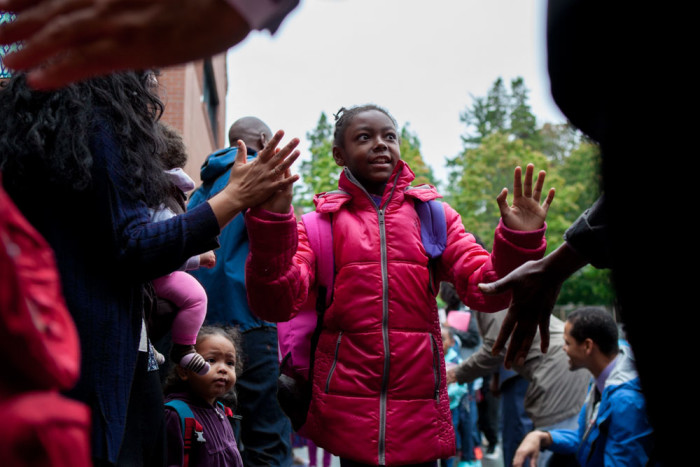
Recently, Sofia Deglel got home from work to find a message from officials at Sand Point Elementary School in Seattle to bring her first-grader to a 8:30 a.m meeting.
Confused and worried, she did. Eight school officials— administrators,teachers and others — were there, heightening her sense of dread.
The staff members told her they were worried about her son because they said he appeared to be learning slowly, and they wanted to put him into a special education program.
To Deglel, that made no sense. Her son did well during a summer of advanced reading lessons at a private Kumon tutoring center.
It turned out, her son just stumbled a bit in classwork in the first few weeks of school. She convinced the officials her son was fine, and he has done well since.
Deglel and her son are African-American and to Deglel, the misunderstanding was an example of officials treating non-white students differently from white students.
Delgel believes a white student with a couple slow days in school would not have been routed automatically to a special education program.
“It’s never intentional. … It is an unconscious bias,” said Chandra Hampton, whose son also attends Sand Point Elementary School.
To Deglel and to Hampton, a Native American woman with a white husband and mixed-race child, such bias is not the fault of Sand Point’s staff, but symptom of the cultural miscommunications that happen frequently with teachers and students from different ethnic backgrounds. This miscommunication has ripple effects on the kids’ education.
The two joined Seattle legislators in Olympia last week to stump for a package of bills aiming to address the opportunity gap.
Sand Point Elementary’s students are more diverse than the Seattle Public Schools at large according to the PTA’s website: the ethnic and racial breakdown of students is 29 percent African-American, 26 percent Asian, 16 percent Hispanic, 4 percent Native American and 29 percent white. About 27 percent of students speak a first language that is not English — with 22 different native languages represented. And 60 percent of students qualify for free lunch and reduced price lunch programs — meaning they come from low-income families.
But county and statewide, teachers are less ethnic and racially diverse than the students they teach. In King County, about 86 percent of teachers are white, 5 percent Asian, 3 percent Hispanic, 2.5 percent African-American, and 2 percent are of mixed races. Together, Native Americans and Pacific Islanders make up less than 1 percent of the county’s teachers.
Because of the lack of diversity in teaching staff, cross-cultural miscues between school officials and families are problems across the state, she said.
About 44 percent of students in Washington belong to a ethnic or racial minority group, according to the 2015-16 data from the Office of the Superintendent of Public Instruction: 22 percent of the state’s students are Hispanic, 2.5 percent Native American, 7 percent Asian-American, 4 percent African-American, 1 percent Hawaiian and Pacific islander, 7.5 percent mixed race and 56 percent white.
In contrast, about 11 percent of the state’s teachers belong to a racial or ethnic minority.
Deglel and Hampton joined other parents and several Democratic legislators last week from Seattle in a press conference in support of education bills that would cover dealing with those cross-cultural gaps, as well as bills that address teacher recruitment, school construction and dealing with homeless students.
One bill, House Bill 1541, specifically addresses the cultural gap. It would develop a program to train all school staff members in cultural competence and focus on recruiting teachers of color. It also would require collection and analysis of racial and ethnic information on teachers and students.
Bill sponsor Rep. Sharon Tomiko Santos, D-Seattle, said the current public education system is not designed to adjust for cultural differences.
“But we know every child is different. One size does not fit all,” Santos said. “It’s our paramount duty as a state to provide each student with the unique and integrated supports they need to achieve academic excellence and success. The best way to accomplish that goal for every child is to close the educational opportunity gap.”
Santos’ bill was introduced last session and passed the Democrat-controlled House, but never came to the floor in the Senate, which is majority Republican. Republicans have said that while many lawmakers support parts of the bills, the package of education bills together tries to tackle too much, including addressing school discipline.
But for the Sand Point Elementary parents, the issues of cross-cultural communication can’t wait for the legislature to act.
The Sand Point PTA recently raised the cash to hire a counselor for the school specifically to handle cross-cultural issues, Hampton said.


Fascinating article. Tutoring can help support children where teachers fail.